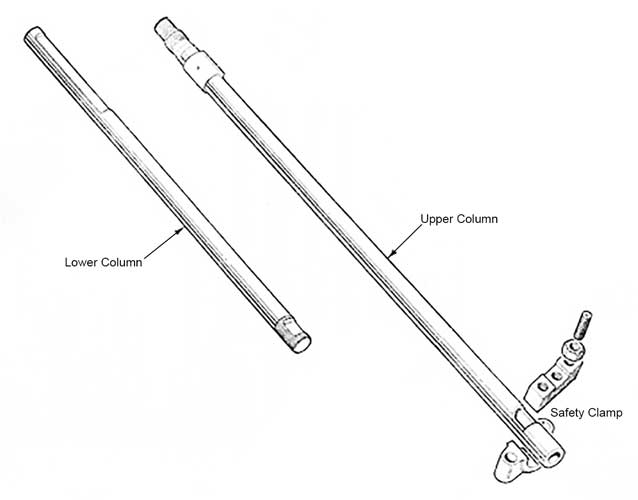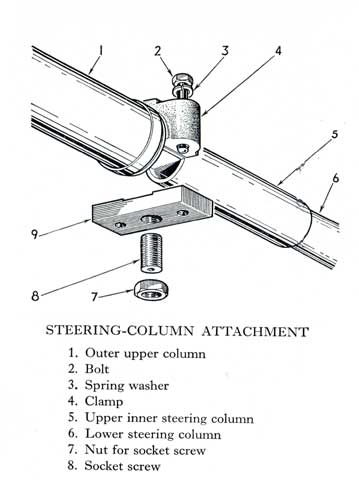
The Steering
The GT6, along with many other post war Triumphs, has rack and pinion steering. This was made by Alford & Adler an engineering company based in Hemle Hempstead, which was taken over by Standard-Triumph in 1959. Because of the many different cars with this system it is not usually possible to interchange between models; there are 3 different rack lengths and half a dozen different pinions. The dimensions of the GT6 rack are shown below (from the official workshop manual).

| Dimension | inches | mm |
| 1 | 8.75 | 222.25 |
| 2 | 1.42 | 36.07 |
| 3 | 3.33 | 84.58 |
| 4 | 0.88 | 22.35 |
| 5 | 16.88 | 428.75 |
| 6 | 12.65 | 321.31 |
Below is a GT6 steering rack (refurbished by Jigsaw Racing).

Rack and pinion as a system is older than the car, a typical use is in raising canal lock gates. The first automotive use of rack and pinion steering was in the 1933 BMW 303 (which incidentally had a straight six cylinder engine and twin carburettors). In 1934 Citroën followed with the Traction Avant. After the war many British manufacturers took up this system as it has the advantages of giving less backlash and more steering 'feel' as it is more precise, it is lighter than other systems, and takes up less room in the 'chassis' and finally has less parts, so is cheaper to make and easier to repair.
The steering column itself comprises two sections, the lower column (which ends with a splined part which attaches to the steering joint at the rack) and the upper part which ends with a similar splined part to which the steering wheel is fixed. These are connected by a safety clamp - in the words of Motor Sport in July 1959 in an article about the new Triumph Herald (which shares many mechanical parts with the GT6) "the column is adjustable through its safety collapsible clamp". The lower column slides into the upper column (hence the small amount of adjustment) and the securung clamp is designed to break in a crash, preventing the driver being injured by the steering wheel.

The Safety Clamp is illustrated below (from Pearson's Illustrated Car Servicing Series - Triumph Herald - 1965).

![]()